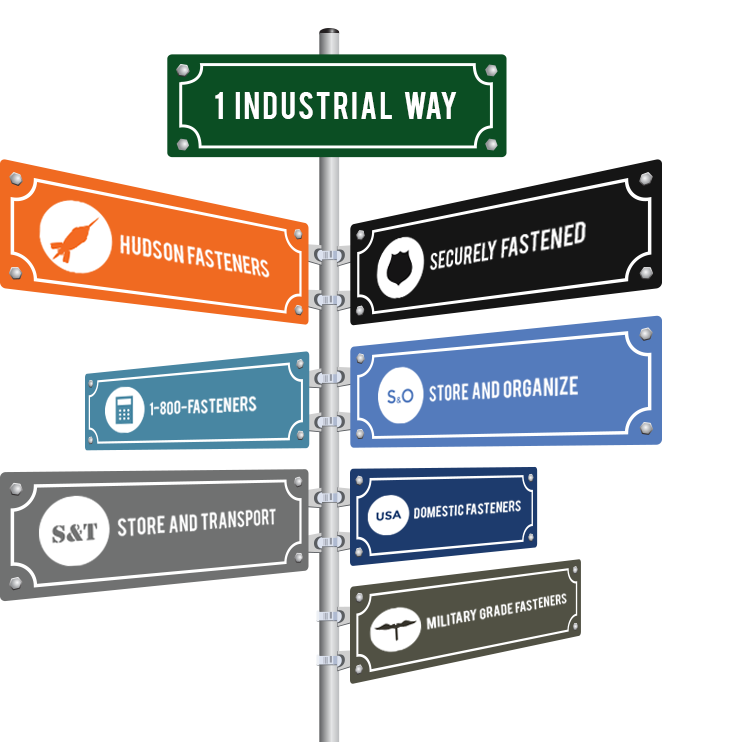 Loading... Please wait...
Loading... Please wait...-
Call Us (877) 427-2739
- Our Story
- Contact Us
- Fastener News Desk
- Nut and BLOG
- My Account
- Items / $0.00
All prices are in All prices are in USD
Categories
- Home
- Nut and BLOG
- ASTM Standards
Nut and BLOG - ASTM Standards
If you look around, you’ll see you’re surrounded by fasteners!
Posted by Richard Shaw | Sun Advocate on 19th Apr 2017

They are around us in almost everything we do, from the cars we drive to the house we live in. From the computer on our desk to the lawn mower we cut our grass with.
They are fasteners. Most people don’t use that word to describe them; they call them instead nuts and bolts, or screws, nails or rivets. But there are many kinds, with millions of applications, and as a group in the construction and manufacturing industry they are called by the name fasteners.
From the time I was a small boy I was always interested in how things were put together. Growing up on a dairy farm I watched my dad and my uncles work on equipment, put up fences and build structures for the operation. If there wasn’t anything else in common in what they were doing with other projects, they were always using some kind of fastener.
When I became a teenager I had this friend whose dad was a mechanical engineer. The son had the same mind set as his dad and when we used to work on cars he always insisted that if a fastener got lost somehow, we had to find the exact replacement for it before we finished the job. Coming from a farm where we fixed a lot of things with baling wire, I really just thought a bolt was a bolt and a nut was a nut and if they fit the hole and worked together, well who cared. He and his father taught me a lot about why the right fastener was important. I remember we made an awful lot of trips to the local Chevrolet dealership to pick up exactly the right bolt, nut or screw for his 1956 Bel Air when we were fixing something on it.
People fail to realize what an important part fasteners play in our economy. It is a multi-billion dollar industry. Putting two pieces of something together, and let’s face it, that is what you are doing whether you are nailing a piece of sheet rock to a 2×4 or tightening a bolt on a battery terminal in a car, requires a fastener. And while there are literally thousands of kinds of fasteners for millions of applications, how we do that today actually has a very short history.
From early times people needed to put things together, and in ancient days they used wooden pegs. It wasn’t until the 1400s that the first threaded screws were introduced. But creating standards for strength and standardization were slow to evolve. Different sizes, based largely on what a manufacturer of the fastener was designing them for varied greatly. And the thread count on a screw or bolt varied even from individual fastener to fastener. The industrial revolution began to change that as more standardization moved in. The first factory to actually manufacture fasteners was founded in England in the mid-18th century.
American standardization
It was in America that standardization really took off. The process of standardizing fastener specifications actually depended on the use of certain production methods in making them. Machines and processes moved ahead and soon companies began to realize that producing like kinds of hardware could be profitable because their use could me much more universal.
As usual, an unfortunate set of events in the history of man, made the fastener industry move ahead more quickly. War always seems to move technology ahead faster than any other human endeavor and the American Civil War had a huge effect on fasteners, as everything needed to be more standardized as the new machines of battle needed repair and rebuilding. Later, however, in World War I the American system of fasteners and what was being made in Europe ran head on into one another with problems of compatibility. After that things moved along quickly in development and World War II pushed the envelope even father, with not only new kinds of connectors being invented, but also those made of new materials being used to fasten or be fastened.
Billions produced
By the 1960s there were 600 plants in the United States producing two billion fasteners per year. That number began to fall as foreign competition cut into production, but in the late 1980s domestic manufacturing began to grow again as findings by research organizations and government investigators showed that many foreign made fasteners specifications were not up to the job of handling the weight, pressures and stress that was required for different kinds of manufacturing.
Fasteners are a huge part of anything that is built, and understanding how important they are, both structurally and economically in constructing or manufacturing something, can make or break a projects success.
Mustangs
That point was driven home to me in a recent documentary I watched called “A Faster Horse.” I couldn’t pass up watching this film, because being a real Mustang freak since the car was introduced in 1964, I have owned over a half dozen of them over the years. The film was about the development of the latest incarnation of the vehicle which was introduced in 2015 and what it took to get it to the customer. Needless to say design and engineering need to work with each other to bring a successful car to market. Towards the end of the film they were tweaking the manufacturing process, evaluating every component. Not only do each of those processes and parts go through scrutiny by the engineers but also by the financial people.
After all, the cost of manufacturing a car must be controlled in some way or each unit would be so expensive most people would not buy it. Late into the process a manufacturing line supervisor came to a financial meeting to complain that one of the fasteners on a front fender wasn’t long enough to be fitted properly by the line worker in an efficient way. To fix the problem he thought it would require a longer bolt. The financial supervisor on the project pulled up the alternatives because he wanted the line to use the shortest bolt possible. The reason? The longer alternatives could cost as much as three cents more per car. That seems so little to those of us not involved, but it was pointed out in the documentary that during the incarnation of that generation of the vehicle, millions would be sold. At that rate three cents more per car adds up quickly and of course there are probably hundreds of problems like that that need to be worked out in the complicated vehicles that are built today.
Right fasteners
So there is a right fastener for everything, and an everything for the right fastener.
Despite knowing all this and the logic of it, I have bottles and drawers full of bolts, nuts and screws that I frequently draw from to fix or repair things around my place. Unless I am doing a specific project or I need something that has to fit a particular circumstance or tolerance, I seldom go and buy one that fits exactly. My wife always seems surprised that I have what it takes to fix things around the house, but when she says that I am not sure if she is referring to the stuff I have or that I have the ability to do it. Maybe both.
Some of the fasteners in those jars are generations old, since I inherited some from my dad, uncles and friends, and have certainly picked up some over the years from other places. Eventually, I believe, many of these fasteners will also be passed onto my kids and grand kids when I am gone. There is a lot of history in those bottles of mostly used connectors; old, unspoken history.
In my life I have often used a three inch long bolt to replace a two and a half inch bolt, a one inch screw in a place where a half inch screw should have been used and a 3d nail where I should have used a 2 d nail. So I guess despite how much people have tried to educate me over the years about fasteners, I am still that “fix it with baling wire farmer” deep down in my heart. I have also added duct to that list in the last few years as well.
Hey, if it works, it works, is my motto.







